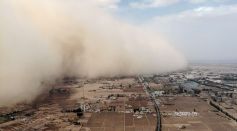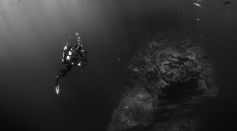ENVIRONMENT & CLIMATE
Invasive Insect Extermination: Study Finds Nematode Bacteria as Effective Pesticide Against Fire Ants
Scientists Tests Laws of Friction To Understand Caldera Collapse During Kilauea Volcano Eruption in 2018

Mosquitoes as Disgusting Insects: 5 Facts That Make Them Undeniably Irritating

Honeycomb Structures: Bees Keep Honey in Shapes Other Than Hexagons

Chilean Chinchorro Mummies Now Protected by the World Heritage List; Who Were They?
Fossilized Giant Vampire Bat Remains Dating Back to 100,000 Years Ago Fills Historical Gaps
Madagascar's Ancient Megafaunas Extinct Due to Introduction of Foreign Animals

Chemical Recycling Repurposes Diapers into Adhesives Removing Millions of Sodden Diaper Wastes
BeachBot: Make Way for This Beach-Cleaning Machine That Will Pick Up Cigarette Butts Using AI

Mega Sandstorm in China Momentarily Erases A Silk Road Outpost, Country Announces to Build 'Great Green Wall'

Loss of Oxygen in Oceans Detrimental to Marine Life; Scientists Show How Deoxygenation Rapidly Affects Reef Ecosystem

Mangroves in Danger: Lack of Invertebrates, Other Species That Threaten Plant Populations

Seafood and Plastics: How Microplastic Pollution Acts as 'Trojan Horse' to Marine Life and Ecology

Can Internal Organs of Prehistoric Species Be Preserved? Paleontologists Discover Fossilized Central Nervous System of 310 Million-Years-Old Arthropod
Most Popular

Will Earth's Magnetic Poles Flip Next? Magnetic Pole Reversal Explained Through Cutting‑Edge Magnetosphere Science

How Lightning Science Reveals Why Charged Storms Are Rising with Global Warming Effects

Relativity Time Dilation Explained: The Physics of Time and Why It Moves Differently in Space

Earthquake Magnitude vs Intensity: Key Differences Explained for Accurate Measurement




